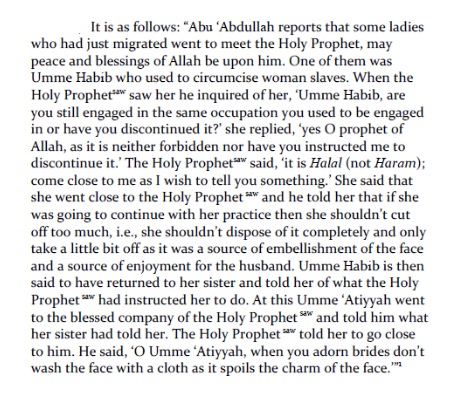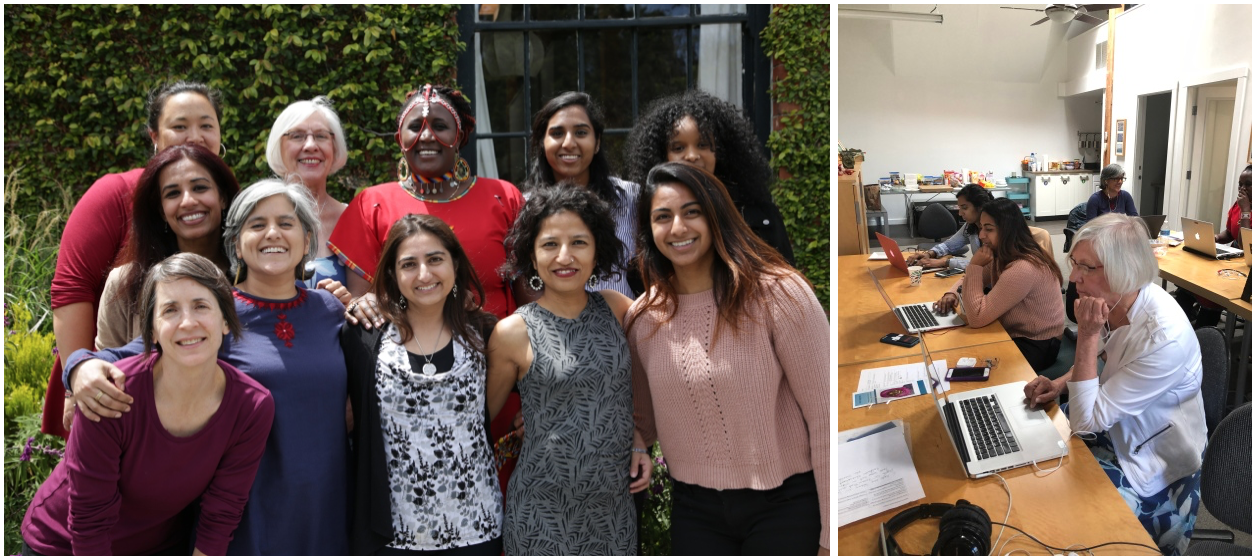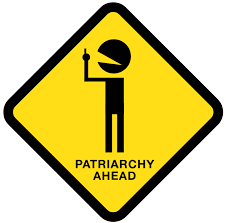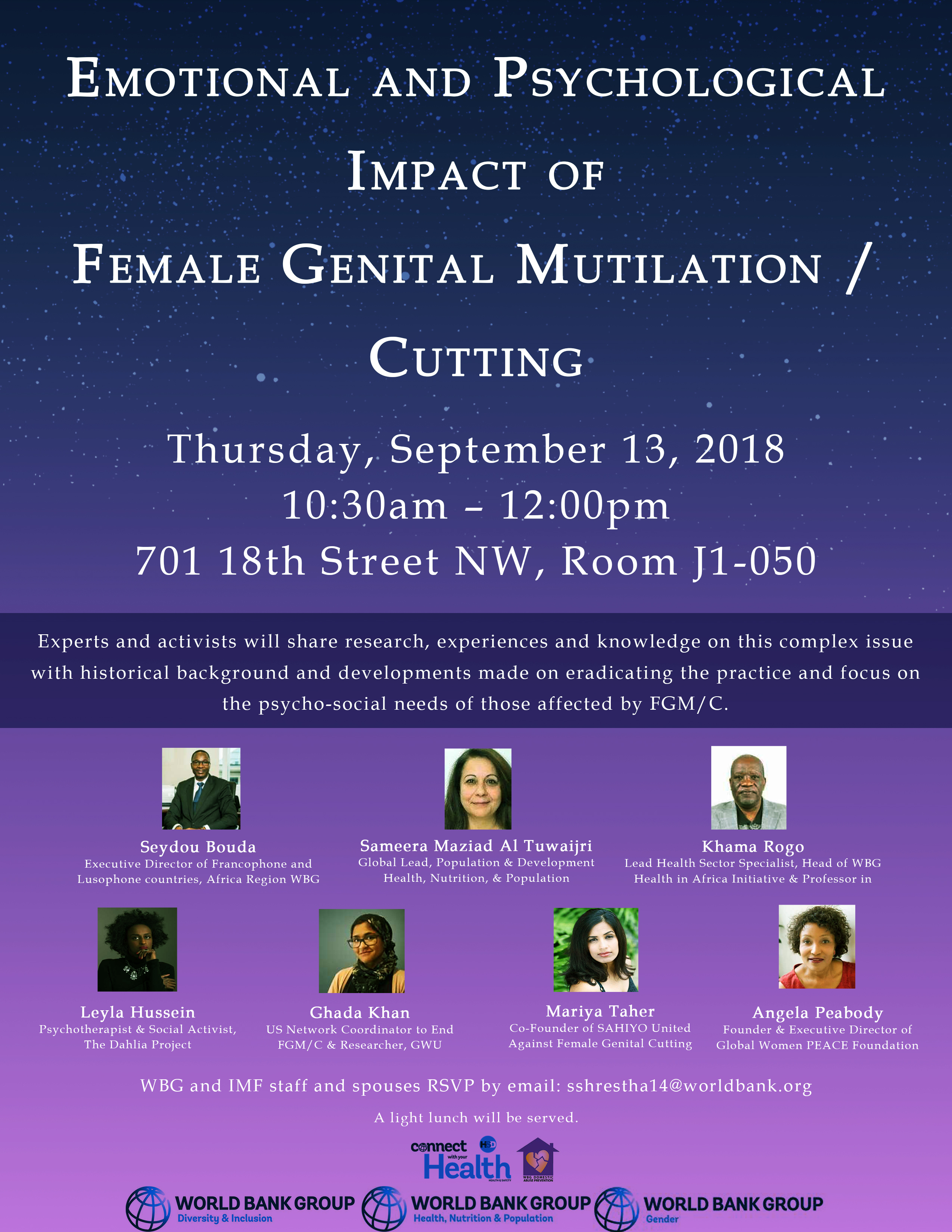By: Koen Van den Brande
Age: 56
Country: India
I rarely speak of the devil.
In Germany they have a saying:
Du sollst den Teufel nicht an die Wand mahlen
Literally this translates to ‘Don’t paint a picture of the devil on the wall’.
Loosely translated it means that you should not invite evil by talking about it.
But maybe there are times we have a duty to alert others to the devil’s work.
What I mean by that is not that anyone in particular is a devil but rather that maybe at times the devil has a hand in misleading people.
My efforts to get to the bottom of the origins of the practice of ‘khatna’ – what the rest of the world calls ‘Female Genital Mutilation’ (FGM) – in the Suleimani community, recently led me to the inevitable conclusion that the devil has had a hand in twisting the words of the Prophet PBUH, to mean the opposite of what He was saying.
My attention was drawn to some research carried out by learned members of the Muslim community. Let me present the facts to you so that you may come to your own conclusion.
Early on in my own research I came across a Hadith – a reported saying of the Prophet – which was being quoted as evidence of tacit approval of this ancient practice, which predated Islam and may have been initiated in the distant past to subdue the sexual urges of female slaves.
My discussions with members of the Suleimani community had made it clear that the Daim-ul-Islam is the rulebook to which many show an unquestioning allegiance.
Of course such blind faith can have dire consequences. The Daim-ul-Islam does indeed refer to the Hadith in question. Following is an extract from a paper published on www.alislam.org, with the title ‘Female circumcision and its standing in Islamic law’.

But it turns out this is not the full Hadith.
In full, the Hadith seems to leave little doubt as to where the Prophet stood on this matter. The authors of the report quote from Al-Kafi, a respected Shiite book of traditions.

Was the Prophet endorsing, encouraging or even mandating that women should be cut?
Or was he signaling his disapproval and in the face of a long-established tradition, trying to limit the harm done to women? Given what he says, is it correct to claim, as some do, that he should have forbidden it, if he really felt it was wrong?
I will leave it to you to draw your own conclusion.
For me these words of Mohammed, now in full view, are consistent with other issues where he championed the rights of women in the face of a culture which at that time saw no reason to do so.
Who decided to shorten the hadith and to what end? And at which point did a woman who ‘used to circumcise women slaves’ become a woman who ‘used to circumcise girls’? There is a substantive difference is there not?
Just as with the modern day suggestion that Mohammed condoned wife-beating, when in fact he counseled restraint and suggested several alternative ways of resolving marital disputes or the insistence by some on the validity of ‘triple talaq’ divorce, where in fact careful mediation over a period of time is prescribed, one can only conclude that the devil himself has repeatedly sought to undermine the Prophet’s cause as champion of the rights of women!
Today we call this ‘fake news’ and we are learning day by day, how it is used to mislead those who believe without questioning.
Witness how the young parents of our community are systematically fed disinformation, building on that same principle of blind faith. But blind faith in whom?
I quote from the website www.islamqa.com.

Search for the term ‘khatna’ and the following question is addressed, among others:

This is how the scene is set:

I wonder what a properly qualified medical practitioner would make of some of the advice given.

Need I say more ?
How do we tackle such blatant attempts at misleading parents of young girls?
Surely the best strategy must be to focus on facts and truth. So I am attempting to find a consensus across the Suleimani community around the following statement.
“I as a member of the Suleimani Jamaat, in the interest of young parents and their girls, want to reflect what I believe to be the truth about the practice of khatna.
Fact is …
- It is a tradition which predates Islam
- It is not mentioned in the Quran at all
- It is not practiced by all muslims
- It has been declared a crime in several Muslim majority countries
- It is considered a health hazard by the World Health Organization
- It is considered a crime against a child by the United Nations
Truth is, in my humble opinion, that the Prophet Mohammed PBUH frowned upon this practice and sought to prevent harm from being done to women.
I believe that these facts should be endorsed by our leadership and communicated to all of the Jamaat ‘s young parents.
The Daim-ul-islam states that ‘khatna’ is not obligatory and that it should not be performed before a girl is 7-years-old.
I believe that it would be in line with this rule to recommend to parents that any decision to proceed with this practice should be postponed until the age of consent.
And in line with the Prophet’s guidance, at a time when it was a more common practice, I believe that when and if it is performed, it must be done symbolically only and cause no harm.”
I hope you can join the effort by endorsing this statement.
And if you cannot, I invite you to propose an alternative.
At least let’s start by banning the use of http://www.isllamqa.com
Let us work together to undo the work of the devil.
This blog is the third in a three-part series that describes the practice of FGC within the Suleimani Bohra community. Read the others here and here.















